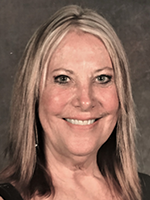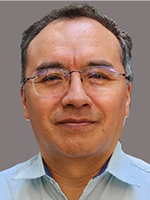Back to Alliance Media and Publications
Boots on the Ground: Building Sustainable Community Partnerships
September 19, 2024
Your zip code can outweigh your genetic code when it comes to overall health and life expectancy, according to research published in the New England Journal of Medicine. Cancer disparities are influenced not only by biological factors, but by environmental and social ones, from exposure to air pollution to diet to education level.
The most at-risk communities need a strong health care presence and sufficient investment to close the gap. Yet a hospital can be the top-ranked in the world but not appropriately aligned with the needs of the respective communities it serves.
So, how can institutions better integrate within their communities and create long-term, mutually beneficial relationships? On August 19, the Alliance sought to address that question. They organized a webinar that delved into the optimization of sustainable community partnerships, a crucial aspect of their mission.
With Alliance Director Robert A. Winn, M.D., and Marcie S. Wright, Ph.D., leading the way, a diverse group of three panelists, all of whom are partnering with Alliance grantees, shared their insights. Their discussion highlighted how effective community engagement can bridge the gap between healthcare institutions and the patients who need their services the most.
“Cultivating diverse community partnerships is at the heart of our framework at the Alliance,” said Dr. Winn. “To make cancer care more equitable, and accessible to people from all zip codes, we have to work together. That means forging partnerships between big hospitals and grassroots organizations, to provide patients with the resources they truly need.”
From Las Chismosas (“The Local Gossips”) to Social Media Influencers: Leveraging Non-Traditional Partnerships
 Participants were asked what they considered an effective partnership at the webinar's start. The answers stressed “mutually beneficial relationships,” “seamless communication,” and “transparency.” While all of these are true, the webinar showed that the roads to get there vary. Effective communication is vital to building sustainable community partnerships and keeping everyone informed and engaged.
Participants were asked what they considered an effective partnership at the webinar's start. The answers stressed “mutually beneficial relationships,” “seamless communication,” and “transparency.” While all of these are true, the webinar showed that the roads to get there vary. Effective communication is vital to building sustainable community partnerships and keeping everyone informed and engaged.
“If you don’t know what your community needs, how can you serve them?” posed panelist Nancy Aleman, Community Outreach Director of Hoboken Family Planning and Alliance partner RWJBarnabas Health and the Rutgers Cancer Institute. This question underscores the patient-centric approach, a recurring theme throughout the webinar.
Aleman spends her days traversing New Jersey, facilitating events at churches, libraries and schools, in neighborhoods most vulnerable to health inequities. She’s found that by working with similarly-minded entities, they’re able to broach multiple problems simultaneously. For example, if a library is holding an ID-card event for people who don’t have identification, she’ll set up her station there. That’s because patients need photo identification to receive medical care. This is just one example of how leveraging local partnerships can help reach more people.
To drive crowds in the thousands, Aleman gets creative: “I have my social media influencers on Facebook. I have las chismosas (‘the gossipers’). They’re the people who can get the word out about different events.” They might not be the ones with medical degrees, but they’re connected, galvanizing and most of all, trusted by their communities.
Because for Aleman, community engagement is all about building trust. That boils down to listening: “There’s a reason you have two ears and one mouth,” she quipped. “Listen, listen, listen. People can tell when you’re being genuine.”
Not Just a Seat at the Table, but a Voice That’s Heard
 When Brittney Church was diagnosed with breast cancer at 32, she didn’t imagine a future in patient navigation and advocacy.
When Brittney Church was diagnosed with breast cancer at 32, she didn’t imagine a future in patient navigation and advocacy.
“I didn’t know if I’d ever have a seat at the table after being diagnosed,” she said. “I didn’t even know if I wanted a seat at the table.” Today, Church sits on the PARTNERS Community Advisory Board (CAB), working with the Case Comprehensive Cancer Center to inform navigation interventions. “Now I know this is exactly where I need to be,” she said.
She advises from her lived experience, walking through the infrastructure as a patient would and relaying her expertise to the CAB. Through the Alliance, Church has helped make changes like lowering the age constraint for board members (initially the barrier to entry was 40 years old). “Younger people are often dismissed,” Church said. “I know because I was one of them.”
When it comes to representation, all of the panelists stressed, it’s not enough to simply offer space; rather, each person’s opinion needs to be given equal weight. “I really feel heard here,” Church said. Her hope is to make sure every patient feels equally listened to, as they navigate their own diagnoses and treatment plans. In her perfect world, there would be a streamlined process to get everyone at the table, and a hub where patients could access all of their appointments in one place. This emphasis on diverse and inclusive representation makes everyone feel included and valued in the patient advocacy process.
“Too many people fall through the cracks,” she said. “Patient navigation will be what helps.”
Connecting Communities with Academia
 Jairo Guzmán, Founder and President of the Mexican Coalition for the Empowerment of Youth and Families, and Alliance partner to Memorial Sloan Kettering Cancer Center, knows firsthand how isolating a cancer diagnosis can be — and how valuable education is when it comes to navigating one. He emphasizes that people need an opportunity to learn and understand the signs and red flags they should be looking for. This knowledge empowers them and gives them control over their health.
Jairo Guzmán, Founder and President of the Mexican Coalition for the Empowerment of Youth and Families, and Alliance partner to Memorial Sloan Kettering Cancer Center, knows firsthand how isolating a cancer diagnosis can be — and how valuable education is when it comes to navigating one. He emphasizes that people need an opportunity to learn and understand the signs and red flags they should be looking for. This knowledge empowers them and gives them control over their health.
“People need an opportunity to learn. What are the signs [of potential cancer]? What are the red flags they should be looking for?” Guzmán emphasized the importance of providing education and resources in language people can understand, whether that looks like finding interpreters, or putting medical jargon into terms more easily digestible to lay people. As community liaisons, they’re the ones people trust.
Guzmán also commended Memorial Sloan Kettering’s partnership with Latin American consulates, ensuring that the hospital reaches communities in places they feel most safe. “The expectation for many years was that people need to come to the big institutions for services and information,” he said. “There’s a world of difference now, with those services coming to our communities instead.”
Where We Go From Here
A main objective of the Alliance initiative overall is to build partnerships that can be sustained, ones that benefit both patient and institution. “There’s a history in the U.S. of academics landing in our neighborhoods, doing research, taking the knowledge, and never coming back,” Guzmán said. That disconnect is what the Alliance is working to mitigate, through streamlined care and clear communication.
As the Alliance continues its mission to drive equity-centered patient navigation, community partnerships will remain at the forefront, guided by authenticity, creativity and intentionality. According to one webinar participant: “We are better together! I’m more motivated than before and excited to continue the work.”
Written by: Meghan Gunn